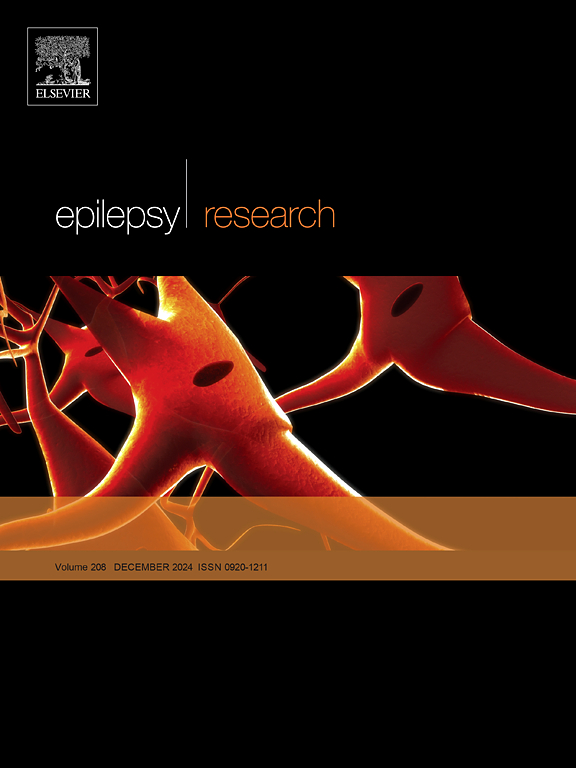Phenobarbital versus valproate for generalized convulsive status epilepticus in adults. An updated systematic review and meta-analysis
IF 2
4区 医学
Q3 CLINICAL NEUROLOGY
引用次数: 0
Abstract
Background and objectives
Status epilepticus (SE) is a neurological emergency with significant mortality and morbidity with generalized convulsive SE (GCSE) being the most prevalent. A meta-analysis reported an overall mortality rate of 15.9 % in adults and 3.6 % in children, with variations based on etiology, age, and treatment response. We compare phenobarbital with valproate for the treatment of GCSE.
Methods
This systematic review and meta-analysis was conducted in accordance with the Preferred Reporting Items for Systematic Reviews and Meta-Analysis (PRISMA) guidelines. An electronic search was performed on PubMed, Embase, and Cochrane from inception to March 2025. In addition, unpublished clinical trials were searched for on the "ClinicalTrials.gov" website. Three authors independently screened the titles and abstracts of all retrieved articles and removed those not fulfilling the inclusion criteria. We only included randomized controlled trials (RCTs) in our meta-analysis.
Results
After screening 3706 articles, seven studies were selected for inclusion after removing the duplicates, and assessing the titles and abstracts. The meta-analysis involved a total pool of 475 participants divided into two groups: 232 patients in the Phenobarbital group, and 243 patients in the Valproate group. The use of Phenobarbital was associated with a more effective control of GSCE compared to Valproate (RR = 1.20, 95 % CI 1.04–1.39, P = 0.01, I2 =80 %), however phenobarbital group were more likely to experience adverse effects (RR = 2.49, 95 % CI 1.53–4.04, P = 0.002, I2 = 0 %) than valproate group.
Conclusion
In conclusion, phenobarbital is more successful than valproate at controlling GSCE, although phenobarbital group showed more negative adverse effects.
苯巴比妥与丙戊酸治疗成人全身性癫痫持续状态。最新的系统综述和荟萃分析
背景与目的癫痫持续状态(SE)是一种死亡率和发病率高的神经系统急症,以全身性惊厥性SE (GCSE)最为常见。一项荟萃分析报告,成人总死亡率为15.9 %,儿童总死亡率为3.6 %,因病因、年龄和治疗反应而异。我们比较苯巴比妥和丙戊酸治疗GCSE。方法本系统评价和荟萃分析按照系统评价和荟萃分析首选报告项目(PRISMA)指南进行。在PubMed, Embase和Cochrane上进行了从成立到2025年3月的电子搜索。此外,在“ClinicalTrials.gov”网站上搜索未发表的临床试验。三位作者独立筛选了所有检索文章的标题和摘要,并删除了不符合纳入标准的文章。我们在meta分析中只纳入了随机对照试验(rct)。结果对3706篇文献进行筛选,剔除重复、评定题目和摘要后,筛选出7篇纳入研究。荟萃分析涉及475名参与者,分为两组:苯巴比妥组232名患者,丙戊酸组243名患者。与丙戊酸相比,使用苯巴比妥能更有效地控制GSCE (RR = 1.20, 95 % CI 1.04-1.39, P = 0.01,I2 =80 %),但苯巴比妥组比丙戊酸组更容易出现不良反应(RR = 2.49, 95 % CI 1.53-4.04, P = 0.002,I2 = 0 %)。结论苯巴比妥组对GSCE的控制效果优于丙戊酸组,但其不良反应较多。
本文章由计算机程序翻译,如有差异,请以英文原文为准。
求助全文
约1分钟内获得全文
求助全文
来源期刊

Epilepsy Research
医学-临床神经学
CiteScore
0.10
自引率
4.50%
发文量
143
审稿时长
62 days
期刊介绍:
Epilepsy Research provides for publication of high quality articles in both basic and clinical epilepsy research, with a special emphasis on translational research that ultimately relates to epilepsy as a human condition. The journal is intended to provide a forum for reporting the best and most rigorous epilepsy research from all disciplines ranging from biophysics and molecular biology to epidemiological and psychosocial research. As such the journal will publish original papers relevant to epilepsy from any scientific discipline and also studies of a multidisciplinary nature. Clinical and experimental research papers adopting fresh conceptual approaches to the study of epilepsy and its treatment are encouraged. The overriding criteria for publication are novelty, significant clinical or experimental relevance, and interest to a multidisciplinary audience in the broad arena of epilepsy. Review articles focused on any topic of epilepsy research will also be considered, but only if they present an exceptionally clear synthesis of current knowledge and future directions of a research area, based on a critical assessment of the available data or on hypotheses that are likely to stimulate more critical thinking and further advances in an area of epilepsy research.
 求助内容:
求助内容: 应助结果提醒方式:
应助结果提醒方式:


